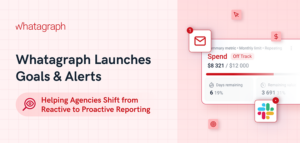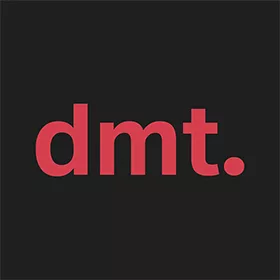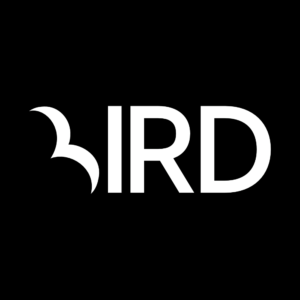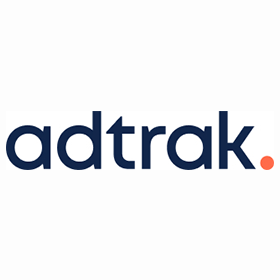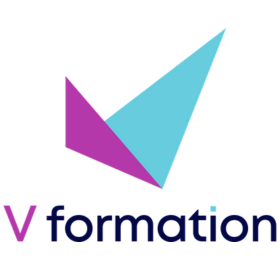We connect you with the best and most reliable agency partners for your projects. All DAN members are thoroughly vetted and ready to deliver exceptional results.
Prominent PPC Marketing Companies of UK
-
Damteq
Best-in-class PPC management services delivered by a Google Premier Partner with over 17 years of paid advertising experience. We run complex PPC campaigns to help you grow your website traffic.
Industries- Beauty & Cosmetics
- Fashion & Retail
- Healthcare
- IT & Technology
- Law
Providing PPC Advertising Services in UK
All ppc marketing agencies in the UK have been vetted and verified against the following criteria:
- Portfolio Quality
- Reliable Services
- Sectoral Expertise
- Team Transparency
If you have any feedback regarding the agencies, please contact us.
-
Superb Digital
HQ: BristolStandard MemberBristol based digital marketing agency providing a tailored combination of SEO, PPC, content & web development to supercharge sales and establish brand presence online.Service Expertise- Google Ads Management
- YouTube Ad Campaigns
- PPC Keyword Research
- PPC Strategy
Industries- Real Estate
- Law
- Fashion & Retail
- Education
- Finance
- Gaming
Featured Agency -
Conquer The Internet
HQ: BrightonGold MemberIf you’re looking for a full service agency that will crawl over broken glass to ensure your business grows. You’ve come to the right place.Industries- Education
- Finance
- Fitness
- Sports
Clients- Straight Up Dance
- Curve Accountancy
- Snaresbrook Online
- Three Bridges FC
- Snaresbrook Online
-
Mr Digital
HQ: BrightonStandard MemberData-driven digital marketing helps SMEs to generate real ROI using digital marketing services. Book a free strategy session today!Service Expertise- Google Ads Management
- Microsoft Ads Management
- PPC Strategy
Industries- Hospitality
- Nonprofit
- Real Estate
- Travel & Tourism
Clients- RedCat Pub Company
- Coaching Inn Group
- The Vulnerability Initiative
- CERT Property
- Bathroom & Kitchen Eleven
- The Berkeley Hotel
Budgets- Min. Project Budget: £1,000+
- Min. Monthly Budget: £1,000+
Featured Agency -
Novi.Digital
HQ: LondonStandard MemberWe navigate intricate data attribution pathways to guarantee optimal ROI from digital marketing campaigns.Industries- Automotive
- Finance
- Insurance
- IT & Technology
Clients- Herbalife
- Siemens Financial Services
- Porsche Centre South Lakes
- Adpak Machinery
- Advertainment Media
- Airtight Testing Staffordshire
- Arriello
- Bransby Wilson
- Carbon Neutral Britain
- Creative Structures Group
Budgets- Min. Project Budget: £1,000+
- Min. Monthly Budget: £1,000+
-
Rudo
HQ: London5.0The rating displayed is a weighted average derived from verified reviews across trusted platforms, further validated by the DAN team for agency authority.Gold MemberStrategy-led websites for B2B. From content strategy, design and development to ongoing support and SEO. Rudo is making your online presence stand out.Industries- Healthcare
- Real Estate
- Automotive
- Finance
- Hospitality
- Telecommunications
- IT & Technology
- Energy
- Startup
Clients- Source Investments
- Event Footprints
- Gravitee
- GetGround
- OnceSource Virtual
- Ten2Two
- Psomagen
- Entrust
- ELTA
Budgets- Min. Project Budget: £10,000+
- Min. Monthly Budget: £1,000+
Featured Agency -
Series Eight
HQ: LondonStandard MemberWe design identities, build websites, and craft growth strategies that better connect e-commerce brands with customers.Industries- Automotive
- Beauty & Cosmetics
- Fashion & Retail
- Finance
- Food & Beverage
- IT & Technology
- Luxury
- Startup
- Travel & Tourism
Clients- Acupanel
- Eye Emporium
- Dr. Few
- Smilemakers
- The Wood Veneer Hub
Budgets- Min. Project Budget: £10,000+
- Min. Monthly Budget: £1,000+
-
Damteq
HQ: Portsmouth+2 cities- UK
- London
- Southampton
4.9The rating displayed is a weighted average derived from verified reviews across trusted platforms, further validated by the DAN team for agency authority.Gold MemberBest-in-class PPC management services delivered by a Google Premier Partner with over 17 years of paid advertising experience. We run complex PPC campaigns to help you grow your website traffic.
Service Expertise- Conversion Tracking & Optimization
- Google Ads Management
- Microsoft Ads Management
Industries- Beauty & Cosmetics
- Fashion & Retail
- Healthcare
- IT & Technology
- Law
Clients- Armorgard
- Viking Extrusions
- Hey Clear
- Collier Pickard
- Wessex International
- Alitex
- Smilemakers
Budgets- Min. Project Budget: £5,000+
- Min. Monthly Budget: £1,000+
Featured Agency -
ALT Agency
HQ: BirminghamGold MemberAward winning digital agency, ALT Agency specialise in WordPress development, website design, SEO and website maintenance – Trusted by NHS, Rossano Ferretti and F1.co.ukIndustries- Law
- Fashion & Retail
- Education
- Food & Beverage
- Finance
- Luxury
- Insurance
- IT & Technology
Clients- NHS
- EXTREME
- F1.co.uk
- Rossano Ferretti
- The BLS
- The UK ICF
- USA Summer Camp
- Parseq
- Parabellum Investments
- Fintilect
- Sonderwell
- Russell Finex
Featured Agency -
Imaginaire
HQ: NottinghamStandard MemberImaginaire is an ecommerce agency specialising in working with luxury brands. We provide web design and development services alongside SEO and PPC.Service Expertise- Google Ads Management
Industries- Fashion & Retail
- Luxury
- Beauty & Cosmetics
Featured Agency -
Found.
HQ: LondonStandard MemberOur PPC experts give brands maximum exposure at the optimal price, allowing you to reach a new audience and target previous users through remarketing campaigns.
Service Expertise- PPC Strategy
- Google Ads Management
- YouTube Ad Campaigns
- PPC Keyword Research
Industries- Finance
- FMCG
- Hospitality
- IT & Technology
Clients- Puma
- The Hoxton
- ManyPets
- Toolstation
- Bonmarché
Budgets- Min. Project Budget: £1,000+
- Min. Monthly Budget: £1,000+
Best Digital Marketing Agencies by Services in UK
Discover the top-notch digital marketing agencies in UK by browsing through wide range of services
- AI Marketing Agencies in UK
- B2B Marketing Agencies in UK
- Branding Agencies in UK
- Content Marketing Agencies in UK
- Creative Agencies in UK
- Digital Marketing Agencies in UK
- Digital PR Agencies in UK
- Digital Product Design Agencies in UK
- Digital Strategy Agencies in UK
- eCommerce Agencies in UK
- Email Marketing Agencies in UK
- Influencer Marketing Agencies in UK
- Mobile App Development Agencies in UK
- Online Advertising Agencies in UK
- SEO Agencies in UK
- Social Media Marketing Agencies in UK
- Software Development Agencies in UK
- UX Design Agencies in UK
- Video Production Agencies in UK
- Web Design Agencies in UK
- Web Development Agencies in UK
How to Choose a PPC Agency in UK
Pay-per-click (PPC) marketing is an online advertising method where advertisers pay a fee based on CPC (Cost-per-click) each time one of their ads is clicked by a user on the internet.
Unlike some other forms of digital marketing that can take time to produce results, PPC campaigns can deliver immediate results. PPC marketing is important for businesses because it allows them to reach a large audience of potential customers who are already interested in what they have to offer. PPC ads are displayed to the target audience, and clicks can lead to immediate website visits and potential conversions.
Choosing the right PPC agency in UK is a crucial decision that can significantly impact the success of your online advertising campaigns. The agency should have experience in PPC marketing and a proven track record of success. They should be able to show you case studies of their work and how they have helped other businesses achieve their goals with paid advertising campaigns.
Moreover, asking the right questions will help you gather essential information about the PPC Agencies in UK and make an informed decision. Here are some important questions to ask the PPC agency you are considering working with:
Do you have PPC Marketing experience in my industry and can you give examples of successful PPC campaigns you have managed?
Understanding the agency’s experience in your industry can demonstrate their expertise in creating effective PPC campaigns for businesses like yours. Ask for case studies or samples of previous work to evaluate the PPC agency’s past performance and results for clients in UK.
Which PPC platforms do you specialize in?
You need to make sure that the PPC agency is proficient in running paid advertising campaigns on the platforms most relevant to your target audience, such as Google and Bing, and other PPC platforms such as Facebook, LinkedIn, Twitter, Youtube and Amazon.
Platform experience is critical when running PPC ads, as different PPC platforms offer unique features, targeting options, and tools. Having the platform experience allows a PPC agency to take full advantage of these features to optimize campaigns effectively. PPC agencies in UK can use advanced targeting options, ad extensions, bid strategies, and other platform-specific functionality to improve ad performance.
How do you conduct keyword research and what targeting options do you use to reach the right audience?
Keyword research is essential for successful PPC campaigns. Ask the PPC Agency’s approach to keyword selection and how they ensure the chosen keywords align with your business goals. Also, learn about the agency’s audience targeting strategies, including demographics, interests, location, and other relevant factors.
How do you optimize PPC campaigns for maximum ROI?
Understanding the PPC Agency’s optimization process and how they continually improve campaign performance will provide insight into their approach to achieving desired results. You should also thoroughly consider the agency’s budgeting strategies and how they optimize spending to achieve the best possible results within your budget constraints.
How do you track conversions and what are your reporting and analytics methods?
You need to find out how the PPC agency tracks conversions and assigns them to particular PPC campaigns and keywords. Ask them what kinds of reports they provide and how often they do it in order to track PPC campaign effectiveness and calculate ROI.
of PPC Firms in UK
-
We are Chain
A Dorset digital marketing agency. SEO-first strategies, websites, PPC & social support with 5★ reviews and long-term client partnerships.
HQ: Bournemouth -
Blended Digital
An independent SEO and digital marketing, graphic design and web development agency based in Portsmouth, Hampshire.
HQ: Portsmouth -
WebBox
WebBox creates user-centred websites and performance marketing that turn digital ambition into measurable growth.
HQ: Cardiff -
Netzoll
A digital marketing agency focused on helping businesses improve their online presence through web design, SEO, PPC, paid social, and videography services.
HQ: Leeds -
Verkeer
At Verkeer we're driven by three core values: Ambition, Approachability, and Integrity. At the heart of everything we do they're what keep us winning.
HQ: London -
Climb & Conquer
A fast-growing, disruptive and remote-first SEO & PPC agency. We're results-obsessed and put our energy & expertise into growing our clients' bottom line through Search.
HQ: Newcastle -
Cognique
Cognique is a Somerset-based digital agency helping businesses grow through results-driven SEO, web design, and tailored marketing strategies.
HQ: Bath -
Newwave Shopify
Shopify web design, development and marketing agency helping ambitious eCommerce brands grow through expert-led builds, migrations and ongoing support.
HQ: Cardiff -
Explosion Digital
The results we provide are: Leads. Meetings. Sales. For most companies, sales and marketing are the key drivers for growth.
HQ: Amersham -
Digivark
Digivark helps businesses increase their online visibility and revenue using SEO, Content Marketing, Link Building and Web development.
HQ: Shropshire -
Plus Promotions
Plus Promotions is an Ireland based IT company that provides web design, web development and online marketing services at affordable prices.
HQ: Cork -
Black Fox Marketing
Website Design and SEO services to small businesses, start-ups and sole-traders across Norfolk and Suffolk.
HQ: Norfolk -
ADVRT
ADVRT – the hot sauce for your advertising. We specialise in performance-driven paid ads that light a fire under your inbound enquiries. No fluff, just scalable results.
HQ: Southampton -
V Formation
V Formation is a Nottingham-based marketing and PR agency that works with businesses within the life sciences, property and tech sectors.
HQ: Nottingham -
Stone Create
Stone Create: Grow your business with strategic marketing & stunning websites. We deliver results that convert.
HQ: Preston
Articles and Case Studies on PPC
For deeper insights into PPC marketing and advertising, explore our expert articles and case studies. Gain valuable knowledge, real-world examples, and proven strategies from top PPC agencies, companies, and service providers. Stay ahead with the latest trends, best practices, and innovative solutions to maximize your ad performance and ROI.














